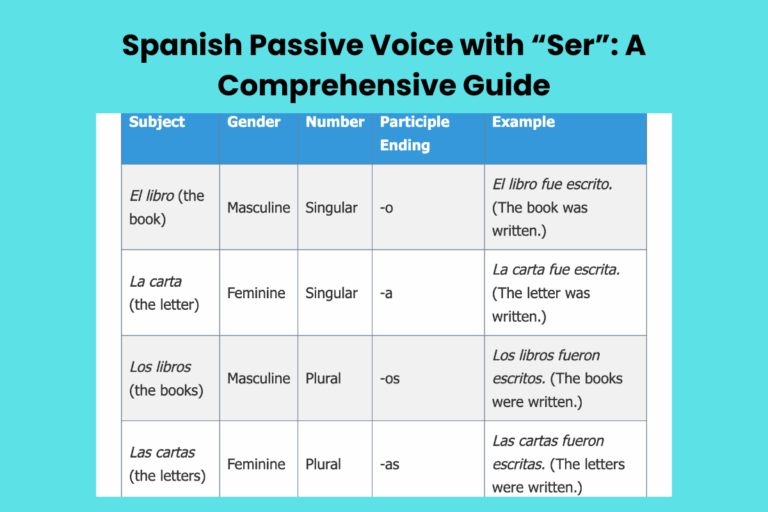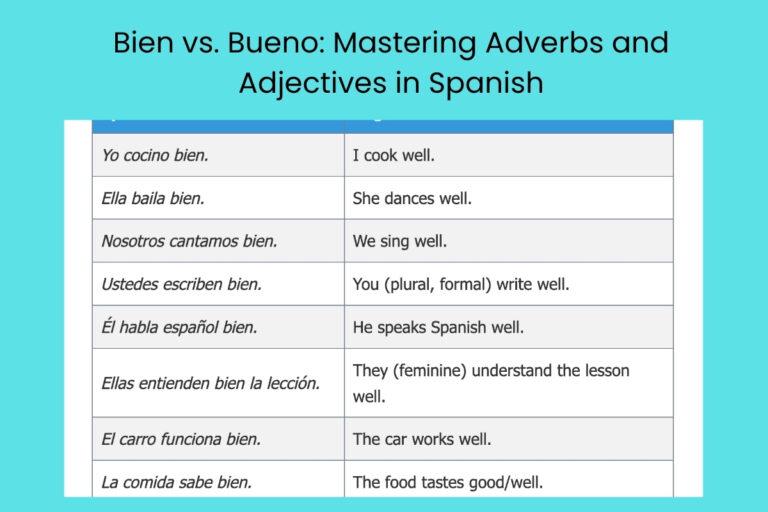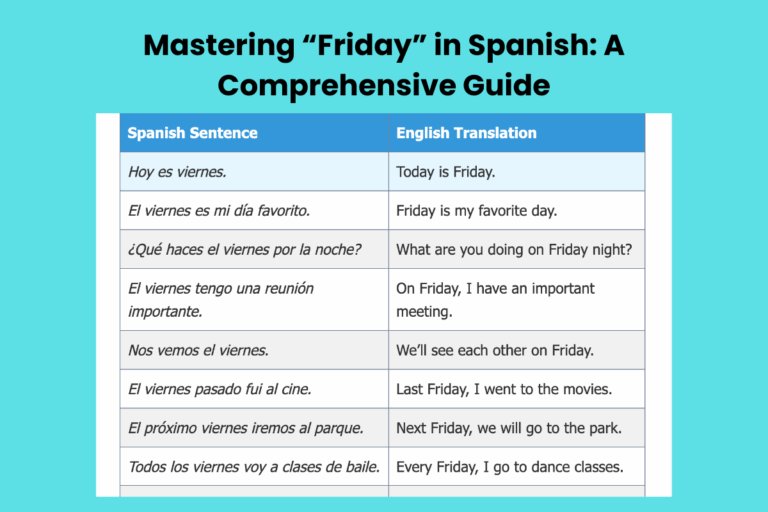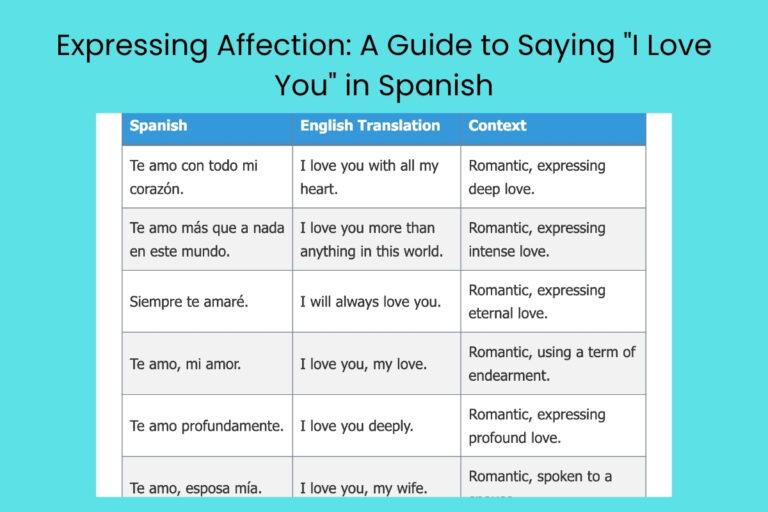Spanish Commands: Mastering “Stop Saying That” in Spanish
Effectively communicating the phrase “stop saying that” in Spanish requires understanding several grammatical nuances. This phrase isn’t a direct, word-for-word translation; rather, it involves using imperative verbs and understanding the context in which the phrase is used.
Learning how to properly convey this command is crucial for anyone looking to improve their fluency and express themselves naturally in Spanish. This article will cover the various ways to say “stop saying that” in Spanish, providing detailed explanations, examples, and practice exercises.
Whether you’re a beginner or an advanced learner, this guide will help you master this important phrase and use it confidently in your conversations.
Table of Contents
- Introduction
- Definition of “Stop Saying That” in Spanish
- Structural Breakdown
- Types and Categories of Commands
- Examples
- Usage Rules
- Common Mistakes
- Practice Exercises
- Advanced Topics
- FAQ
- Conclusion
Definition of “Stop Saying That” in Spanish
The phrase “stop saying that” in Spanish can be translated in several ways, depending on the context, the level of formality, and the specific nuance you want to convey. The most common translations involve using the imperative mood, which is used to give commands or instructions. The key is to choose the correct verb conjugation based on whether you’re addressing someone informally (tú), formally (usted), or in the plural (vosotros/ustedes). Each of these forms requires a slightly different verb conjugation, and understanding these differences is crucial for accurate and effective communication.
The core concept revolves around using verbs that mean “to stop” (dejar de) and “to say” (decir) in the imperative mood. The specific conjugation will vary depending on the pronoun used. For example, when speaking to a friend, you would use the informal “tú” command. When speaking to someone you respect or someone older than you, you would use the formal “usted” command. In Latin America, “ustedes” is often used for the plural form, while in Spain, “vosotros” is more common. Understanding these regional variations is also important for proper usage.
Structural Breakdown
The basic structure for expressing “stop saying that” in Spanish involves the following components:
- Verb “Dejar de” (to stop): This verb is essential for conveying the idea of ceasing an action. It’s always followed by an infinitive.
- Verb “Decir” (to say): This verb indicates the action of speaking or uttering words.
- Pronouns (Tú, Usted, Vosotros, Ustedes): These pronouns dictate the verb conjugation and the level of formality.
- “Eso” or “Aquello” (That): These words refer to the specific thing that is being said. “Eso” is more common, while “aquello” is used for something further away or more abstract.
The general structure is: [Command form of Dejar de] + decir + eso/aquello. The command form of dejar de will change depending on the pronoun you are using. Let’s look at specific examples to illustrate this structure.
Types and Categories of Commands
Spanish commands, also known as the imperative mood, are used to give orders or instructions. There are different forms of commands depending on the person you are addressing:
Informal “Tú” Commands
These are used when speaking to someone you know well, such as a friend or family member. The affirmative “tú” command is generally the same as the third-person singular form of the present indicative.
The negative “tú” command is formed using the present subjunctive.
Formal “Usted” Commands
These are used when speaking to someone you want to show respect to, such as an elder or someone you don’t know well. Both affirmative and negative “usted” commands are formed using the present subjunctive.
Plural “Vosotros/Ustedes” Commands
In Spain, “vosotros” is used for the plural informal command. In Latin America, “ustedes” is generally used for both formal and informal plural commands.
Both affirmative and negative “ustedes” commands are formed using the present subjunctive.
Examples
Here are several examples of how to say “stop saying that” in Spanish, categorized by the type of command. Each example includes the pronoun, the command form of the verb, and a translation.
Informal “Tú” Commands
The following table presents examples of informal commands using the “tú” form. These are generally used with friends, family, or people you are close to.
Note the difference between affirmative and negative commands.
| Spanish | English Translation |
|---|---|
| Deja de decir eso. | Stop saying that. |
| No digas eso. | Don’t say that. |
| Para de decir eso. | Stop saying that. |
| No sigas diciendo eso. | Don’t keep saying that. |
| Basta ya de decir eso. | Enough with saying that already. |
| Deja de repetir eso. | Stop repeating that. |
| No repitas eso. | Don’t repeat that. |
| Deja de hablar de eso. | Stop talking about that. |
| No hables de eso. | Don’t talk about that. |
| Deja de mencionar eso. | Stop mentioning that. |
| No menciones eso. | Don’t mention that. |
| Deja de contar eso. | Stop telling that. |
| No cuentes eso. | Don’t tell that. |
| Deja de afirmar eso. | Stop affirming that. |
| No afirmes eso. | Don’t affirm that. |
| Deja de insinuar eso. | Stop insinuating that. |
| No insinúes eso. | Don’t insinuate that. |
| Deja de proclamar eso. | Stop proclaiming that. |
| No proclames eso. | Don’t proclaim that. |
| Deja de vociferar eso. | Stop shouting that. |
| No vociferes eso. | Don’t shout that. |
| Deja de susurrar eso. | Stop whispering that. |
| No susurres eso. | Don’t whisper that. |
| Deja de murmurar eso. | Stop mumbling that. |
| No murmures eso. | Don’t mumble that. |
| Deja de divulgar eso. | Stop spreading that. |
| No divulgues eso. | Don’t spread that. |
| Deja de inventar eso. | Stop inventing that. |
| No inventes eso. | Don’t invent that. |
Formal “Usted” Commands
The following table illustrates the formal commands using the “usted” form. These are used when addressing someone with respect, such as a superior, an older person, or someone you don’t know well.
Both affirmative and negative commands use the subjunctive form.
| Spanish | English Translation |
|---|---|
| Deje de decir eso. | Stop saying that. (formal) |
| No diga eso. | Don’t say that. (formal) |
| Pare de decir eso. | Stop saying that. (formal) |
| No siga diciendo eso. | Don’t keep saying that. (formal) |
| Basta ya de decir eso. | Enough with saying that already. (formal) |
| Deje de repetir eso. | Stop repeating that. (formal) |
| No repita eso. | Don’t repeat that. (formal) |
| Deje de hablar de eso. | Stop talking about that. (formal) |
| No hable de eso. | Don’t talk about that. (formal) |
| Deje de mencionar eso. | Stop mentioning that. (formal) |
| No mencione eso. | Don’t mention that. (formal) |
| Deje de contar eso. | Stop telling that. (formal) |
| No cuente eso. | Don’t tell that. (formal) |
| Deje de afirmar eso. | Stop affirming that. (formal) |
| No afirme eso. | Don’t affirm that. (formal) |
| Deje de insinuar eso. | Stop insinuating that. (formal) |
| No insinúe eso. | Don’t insinuate that. (formal) |
| Deje de proclamar eso. | Stop proclaiming that. (formal) |
| No proclame eso. | Don’t proclaim that. (formal) |
| Deje de vociferar eso. | Stop shouting that. (formal) |
| No vocifere eso. | Don’t shout that. (formal) |
| Deje de susurrar eso. | Stop whispering that. (formal) |
| No susurre eso. | Don’t whisper that. (formal) |
| Deje de murmurar eso. | Stop mumbling that. (formal) |
| No murmure eso. | Don’t mumble that. (formal) |
| Deje de divulgar eso. | Stop spreading that. (formal) |
| No divulgue eso. | Don’t spread that. (formal) |
| Deje de inventar eso. | Stop inventing that. (formal) |
| No invente eso. | Don’t invent that. (formal) |
Plural “Vosotros/Ustedes” Commands
The following table provides examples of plural commands. In Spain, “vosotros” is used for informal plural commands, while in Latin America, “ustedes” is typically used for both formal and informal plural commands.
Note the subjunctive form for both affirmative and negative commands with “ustedes.”
| Spanish (Spain – Vosotros) | Spanish (Latin America – Ustedes) | English Translation |
|---|---|---|
| Dejad de decir eso. | Dejen de decir eso. | Stop saying that. (plural) |
| No digáis eso. | No digan eso. | Don’t say that. (plural) |
| Parad de decir eso. | Paren de decir eso. | Stop saying that. (plural) |
| No sigáis diciendo eso. | No sigan diciendo eso. | Don’t keep saying that. (plural) |
| Basta ya de decir eso. | Basta ya de decir eso. | Enough with saying that already. (plural) |
| Dejad de repetir eso. | Dejen de repetir eso. | Stop repeating that. (plural) |
| No repitáis eso. | No repitan eso. | Don’t repeat that. (plural) |
| Dejad de hablar de eso. | Dejen de hablar de eso. | Stop talking about that. (plural) |
| No habléis de eso. | No hablen de eso. | Don’t talk about that. (plural) |
| Dejad de mencionar eso. | Dejen de mencionar eso. | Stop mentioning that. (plural) |
| No mencionéis eso. | No mencionen eso. | Don’t mention that. (plural) |
| Dejad de contar eso. | Dejen de contar eso. | Stop telling that. (plural) |
| No contéis eso. | No cuenten eso. | Don’t tell that. (plural) |
| Dejad de afirmar eso. | Dejen de afirmar eso. | Stop affirming that. (plural) |
| No afirméis eso. | No afirmen eso. | Don’t affirm that. (plural) |
| Dejad de insinuar eso. | Dejen de insinuar eso. | Stop insinuating that. (plural) |
| No insinúeis eso. | No insinúen eso. | Don’t insinuate that. (plural) |
| Dejad de proclamar eso. | Dejen de proclamar eso. | Stop proclaiming that. (plural) |
| No proclaméis eso. | No proclamen eso. | Don’t proclaim that. (plural) |
| Dejad de vociferar eso. | Dejen de vociferar eso. | Stop shouting that. (plural) |
| No vociferéis eso. | No vociferen eso. | Don’t shout that. (plural) |
| Dejad de susurrar eso. | Dejen de susurrar eso. | Stop whispering that. (plural) |
| No susurréis eso. | No susurren eso. | Don’t whisper that. (plural) |
| Dejad de murmurar eso. | Dejen de murmurar eso. | Stop mumbling that. (plural) |
| No murmuréis eso. | No murmuren eso. | Don’t mumble that. (plural) |
| Dejad de divulgar eso. | Dejen de divulgar eso. | Stop spreading that. (plural) |
| No divulguéis eso. | No divulguen eso. | Don’t spread that. (plural) |
| Dejad de inventar eso. | Dejen de inventar eso. | Stop inventing that. (plural) |
| No inventéis eso. | No inventen eso. | Don’t invent that. (plural) |
Usage Rules
Understanding the rules for using commands in Spanish is crucial for accurate communication. The imperative mood has specific rules for affirmative and negative commands, as well as pronoun placement.
Affirmative Commands
Affirmative commands tell someone to do something. For the “tú” form, the affirmative command is generally the same as the third-person singular form of the present indicative (e.g., habla – speak). For “usted,” “vosotros,” and “ustedes,” the affirmative commands are formed using the present subjunctive.
Negative Commands
Negative commands tell someone not to do something. All negative commands (“tú,” “usted,” “vosotros,” and “ustedes”) are formed using the present subjunctive. A “no” is placed before the verb to make it negative (e.g., No hables – Don’t speak).
Pronoun Placement
In affirmative commands, reflexive, direct, and indirect object pronouns are attached to the end of the verb. In negative commands, these pronouns precede the verb.
For example:
- Affirmative: ¡Dímelo! (Tell it to me!)
- Negative: ¡No me lo digas! (Don’t tell it to me!)
Common Mistakes
Learners often make mistakes when using Spanish commands. Here are some common errors and how to avoid them:
| Incorrect | Correct | Explanation |
|---|---|---|
| No dejes de decir eso. | Incorrect conjugation of the verb “dejar” in the negative “tú” command. | |
| No digas eso. | Incorrect word order in the negative command. | |
| Deje de decir eso. | Incorrect conjugation of the verb “dejar” in the formal “usted” command. | |
| No digas eso. | Using the indicative instead of the subjunctive in a negative command. | |
| Dejen de decir eso. | Using the “vosotros” form in Latin America, where “ustedes” is preferred for plural commands. |
Practice Exercises
Test your understanding of Spanish commands with these practice exercises. Fill in the blanks with the correct form of the verb in the imperative mood.
Exercise 1: Informal “Tú” Commands
Fill in the blanks with the correct form of the verb.
| Sentence | Verb | Answer |
|---|---|---|
| (Hablar) más alto, por favor. | Hablar | Habla |
| No (comer) tan rápido. | Comer | No comas |
| (Escribir) una carta a tu abuela. | Escribir | Escribe |
| No (llegar) tarde. | Llegar | No llegues |
| (Hacer) la tarea ahora. | Hacer | Haz |
| No (ser) tonto. | Ser | No seas |
| (Ir) al supermercado. | Ir | Ve |
| No (poner) eso ahí. | Poner | No pongas |
| (Tener) cuidado. | Tener | Ten |
| No (venir) mañana. | Venir | No vengas |
Exercise 2: Formal “Usted” Commands
Fill in the blanks with the correct form of the verb.
| Sentence | Verb | Answer |
|---|---|---|
| (Hablar) más despacio, por favor. | Hablar | Hable |
| No (comer) eso. | Comer | No coma |
| (Escribir) su nombre aquí. | Escribir | Escriba |
| No (llegar) tarde a la reunión. | Llegar | No llegue |
| (Hacer) el favor de sentarse. | Hacer | Haga |
| No (ser) impaciente. | Ser | No sea |
| (Ir) con cuidado. | Ir | Vaya |
| No (poner) los pies en la mesa. | Poner | No ponga |
| (Tener) paciencia. | Tener | Tenga |
| No (venir) sin avisar. | Venir | No venga |
Exercise 3: Plural “Ustedes” Commands (Latin America)
Fill in the blanks with the correct form of the verb.
| Sentence | Verb | Answer |
|---|---|---|
| (Hablar) todos a la vez. | Hablar | Hablen |
| No (comer) toda la torta. | Comer | No coman |
| (Escribir) sus respuestas en el papel. | Escribir | Escriban |
| No (llegar) tarde a la clase. | Llegar | No lleguen |
| (Hacer) silencio, por favor. | Hacer | Hagan |
| No (ser) ruidosos. | Ser | No sean |
| (Ir) a casa ahora. | Ir | Vayan |
| No (poner) las manos ahí. | Poner | No pongan |
| (Tener) cuidado con el perro. | Tener | Tengan |
| No (venir) mañana si no quieren. | Venir | No vengan |
Advanced Topics
For advanced learners, there are more nuanced ways to express “stop saying that” in Spanish that go beyond the basic commands. These expressions often involve idioms or more complex grammatical structures.
- Using “Basta de…” (Enough of…): This expression is used to indicate that you’ve had enough of something. For example, “Basta de decir tonterías” (Enough of saying nonsense).
- Adding Emphasis with Reflexive Pronouns: You can add emphasis to the command by using a reflexive pronoun. For example, “Cállate” (Shut up) is more forceful than simply saying “Calla” (Be quiet).
- Using Subjunctive Clauses for Indirect Commands: Instead of directly commanding someone, you can use a subjunctive clause to express a desire or suggestion. For example, “Quiero que dejes de decir eso” (I want you to stop saying that).
FAQ
Here are some frequently asked questions about using commands in Spanish:
- What is the difference between “tú” and “usted” commands?
The “tú” commands are informal and used with people you know well, while “usted” commands are formal and used to show respect. They have different verb conjugations in both affirmative and negative forms.
- How do I form negative commands in Spanish?
All negative commands are formed using the present subjunctive. You simply add “no” before the verb. For example, “No hables” (Don’t speak).
- Where do I place pronouns in affirmative commands?
In affirmative commands, pronouns are attached to the end of the verb. For example, “Dímelo” (Tell it to me).
- Where do I place pronouns in negative commands?
In negative commands, pronouns precede the verb. For example, “No me lo digas” (Don’t tell it to me).
- What is the difference between “vosotros” and “ustedes” commands?
“Vosotros” is used in Spain for informal plural commands, while “ustedes” is used in Latin America for both formal and informal plural commands.
- Can I use the infinitive form to give a command?
Sometimes, infinitives are used for general commands or instructions, especially in written form, but it’s less common in spoken language for direct commands like “stop saying that.”
- How can I soften a command to make it sound less harsh?
You can add “por favor” (please) to the end of the command. You can also use a more polite verb or phrase, such as “podrías” (could you) followed by the infinitive.
- Are there any irregular verbs in the imperative mood?
Yes, several verbs have irregular forms in the imperative mood, such as “ser” (to be), “ir” (to go), “tener” (to have), and “hacer” (to do). It’s important to memorize these irregular forms.
- How can I practice using commands in Spanish?
Practice by creating your own sentences, role-playing conversations, and using language learning apps or websites that focus on grammar and verb conjugations. Immersing yourself in Spanish-speaking environments can also be very helpful.
Conclusion
Mastering the art of commanding someone to “stop saying that” in Spanish requires a solid understanding of the imperative mood, verb conjugations, and the nuances of formal and informal speech. By understanding the different forms of commands and practicing their usage, you can effectively communicate your message in a way that is both clear and appropriate.
Remember to pay attention to the context and the person you are addressing to ensure that you are using the correct form of the verb.
Continue to practice and immerse yourself in the Spanish language to further refine your skills. Use the examples and exercises provided in this guide as a starting point and continue to explore more complex expressions and idioms.
With dedication and practice, you will be able to confidently and accurately express yourself in Spanish, and effectively tell someone to “stop saying that” when the situation calls for it. The key to fluency is consistent practice and a willingness to learn from your mistakes.







